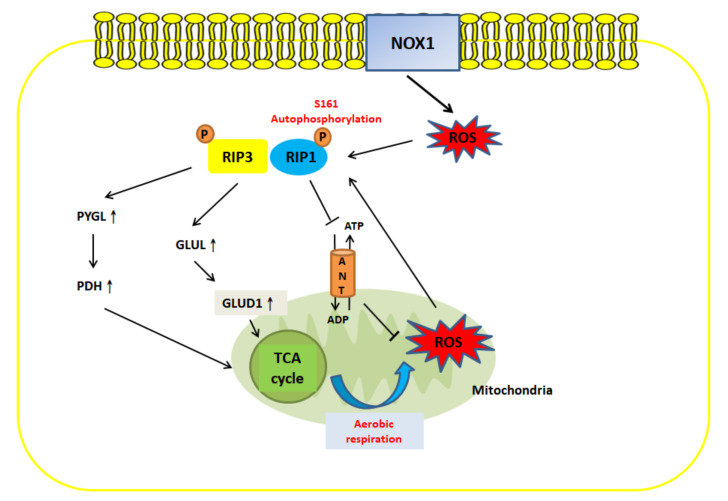Figure 3.
The crosstalk between ROS and necroptosis. ROS and necroptosis can form a positive feedback loop. Extramitochondrial ROS production by NOX1 or mitochondrial ROS generation through oxidative phosphorylation modifies the C257, C268 and C586 residues of RIP1 and facilitates the autophosphorylation of RIP1 at S161. This leads to the recruitment of RIP3 and necroptosis [81,82]. RIP1 can induce ROS production by inhibiting adenine-nucleotide translocase (ANT) and increasing ATP [83]. RIP3 can induce ROS generation through metabolic signaling pathways: (a) Upregulation of PYGL promotes the expression of PDH, which increases TCA cycle activity to induce aerobic respiration and produce ROS [84]. (b) Elevation of GLUL upregulates GLUD1 and increases glutaminolysis, further facilitating the TCA cycle and aerobic respiration. Furthermore, RIP1- and RIP3-mediated ROS production can reactivate necroptosis, forming a positive feedback loop [78,85].

